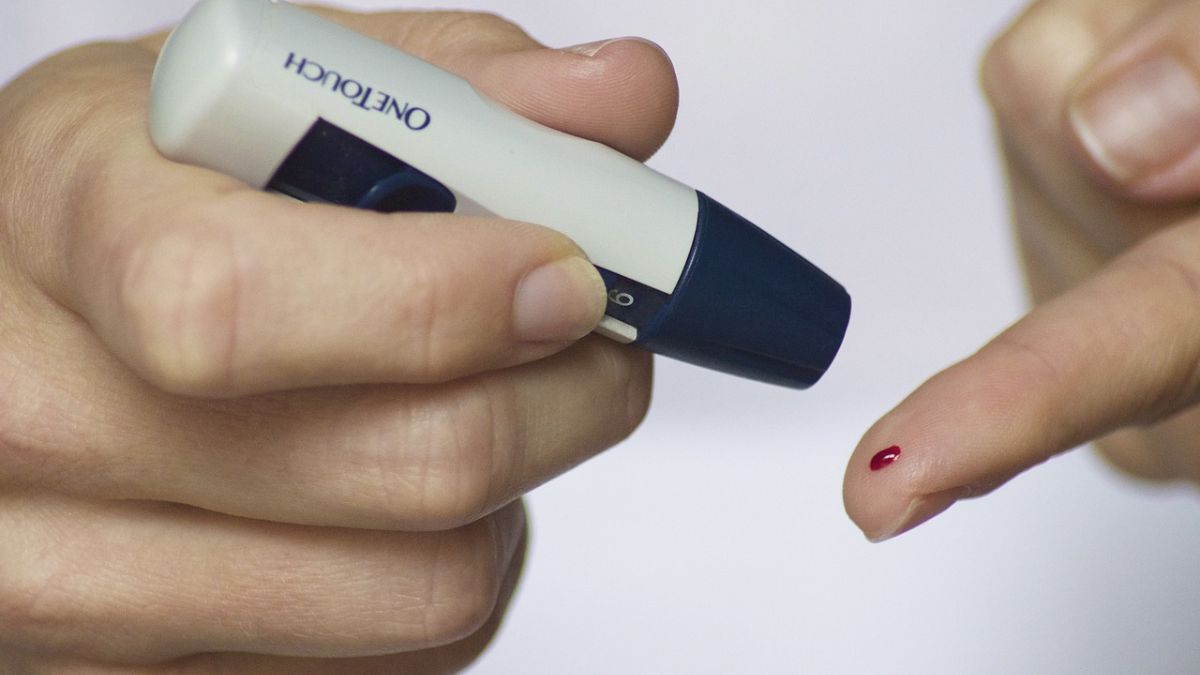India is already infamous as the ‘diabetes capital of the world’. A recent report published in The Lancet has made another concerning revelation – not only did India account for the highest number of diabetics in 2022 but it also had the most cases of untreated diabetes worldwide.
The study, conducted by the NCD Risk Factor Collaboration (NCD-RisC) in collaboration with the World Health Organization (WHO), was released on World Diabetes Day (November 14). The findings are part of the first analysis of trends in both diabetes rates and treatment worldwide.
Let’s take a closer look.
World’s diabetes burden
As per The Lancet study, India had 212 million (21.2 crore) adults living with diabetes in 2022, accounting for 23.7 per cent of the population.
Nearly 62 per cent of diabetics in India, or 133 million (13.3 crore), were not on any treatment, or taking medications.
The report also found that there were 828 million (82.8 crore) diabetic adults around the world in 2022, over four times the total number in 1990.
After India,
China, which is the second most populous nation, had the most diabetics in 2022 — 148 million (14.8 crore). The US had 42 million (4.2 crore) adults living with diabetes, Pakistan 36 million (3.6 crore), Indonesia 25 million (2.5 crore) and Brazil 22 million (2.2 crore).
The report flagged that 445 million (44.5 crore) people aged 30 or above worldwide did not receive treatment for diabetes in 2022, three and a half times the number in 1990.
“Our study highlights widening global inequalities in diabetes, with treatment rates stagnating in many low- and middle-income countries where numbers of adults with diabetes are drastically increasing,” Majid Ezzati of Imperial College London and a senior author on the paper said in a statement, as per ThePrint.
He said this is particularly alarming as people with diabetes in low-income countries tend to be younger. Ezzati said that in case of a lack of effective treatment, these younger people are at “risk of life-long complications – including amputation, heart disease, kidney damage or vision loss – or in some cases, premature death.”
Women vs men
In India, the
diabetes rate among women has witnessed a jump from 11.9 per cent in 1990 to 23.7 per cent in 2022. In the case of men, the rate has increased from 11.3 per cent in 1990 to 21.4 per cent in 2022.
Globally, the diabetes rate has doubled in both genders: 6.8 per cent in 1990 to 14.3 per cent in 2022 for men and 6.9 per cent to 13.9 per cent in women.
India had 69 million (6.9 crore) women and 64 million (6.4 crore) men living with untreated diabetes in 2022. The treatment coverage rose only marginally for both genders — 21.6 per cent in 1990 to 27.8 per cent in 2022 for diabetic women and 25.3 per cent to 29.3 per cent for men during the same period.
How the study was conducted
Researchers examined data from more than 140 million people aged 18 years or older available in over 1,000 studies from different countries.
They applied the two commonly used diagnostic options for diabetes – a fasting plasma glucose (FPG) level of seven millimoles per litre or higher and a glycated haemoglobin (HbA1c) of 6.5 per cent or higher.
HbA1c is the average level of blood sugar over the past 2-3 months.
However, researchers failed to differentiate between type 1 and type 2 diabetes in adults.
What India can do
According to the latest study, about 23.7 per cent of India’s population was diabetic in 2022. This is higher than the 11.4 per cent figure shown by the ICMR-INDIAB (Indian Council of Medical Research-India Diabetes) survey last year.
The previous study had also revealed that 15.3 per cent of the population was pre-diabetic in India.
Experts say the use of HbA1c and fasting glucose for the latest study sent the numbers up.
Dr RM Anjana, president of the Madras Diabetes Research Foundation and one of the researchers involved in the new study, told Indian Express, “We had chosen the gold standard Oral Glucose Tolerance Test (OGTT), which can even indicate prediabetes, in our earlier ICMR-INDIAB paper last year. In this paper, with HbA1c and fasting glucose as deciders, the number of people with diabetes went up. It is also important to note that the HbA1c can be influenced by several factors like anaemia, blood disorders and certain drugs. Hence, it is not an entirely reliable marker for diagnosis of diabetes.”
Experts say the number of untreated diabetics reflects a pressing health concern in India. “From my experience as an endocrinologist, early detection and continuous care can drastically alter diabetes outcomes. Collaborative efforts between government bodies, healthcare professionals, and community organisations are vital to mitigate the burden of untreated diabetes in India, improve health literacy, and deliver timely, equitable care across all geographies,” Dr Sachin Kumar Jain, professor and HOD, department of endocrinology at Amrita Hospital, Faridabad, told Times of India.
Obesity and
poor diets are responsible for the increase in type 2 diabetes rates globally. Changes in lifestyle and a healthy diet can help in keeping the disease at bay.
“Given the disabling and potentially fatal consequences of diabetes, preventing diabetes through healthy diet and exercise is essential for better health throughout the world,” Dr Anjana said in a statement.
“India needs ambitious policies in lower-income regions on restricting unhealthy foods, making healthy foods affordable and even free in school meals, promoting safe places for walking and exercising, including free entrance to public parks and fitness centres,” she was quoted as saying by Indian Express.
With inputs from agencies

)





